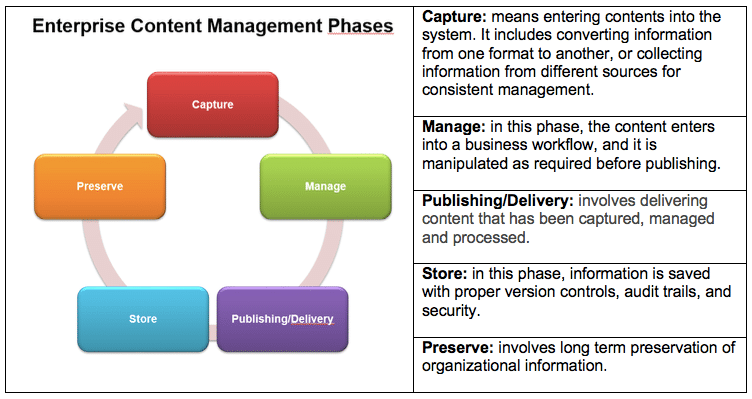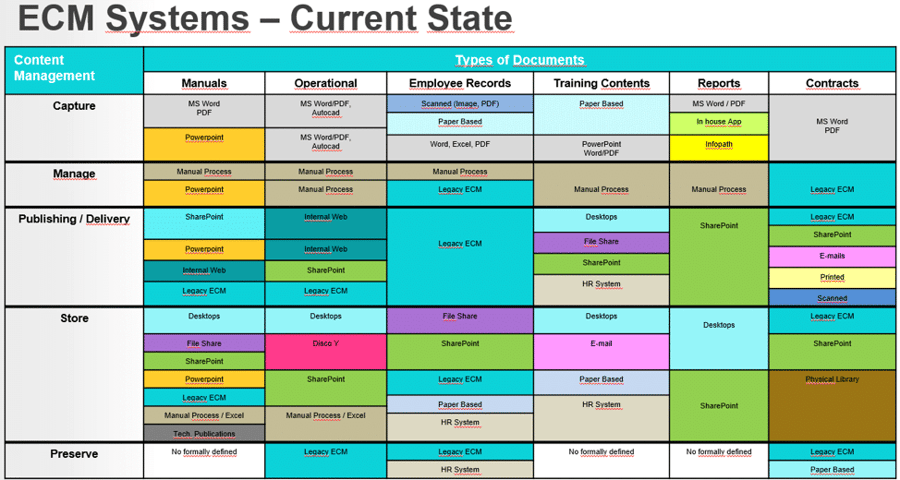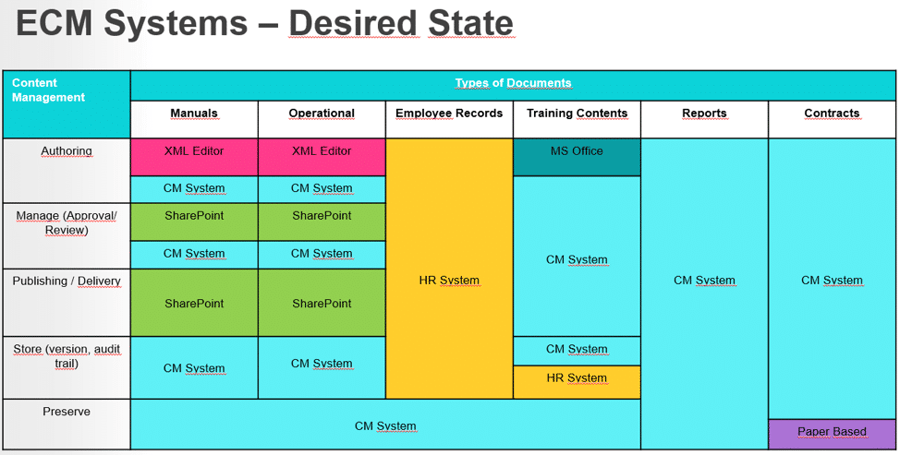Before engaging in any Enterprise Content Management (ECM) initiative in your organization, it is crucial to have a list of current ECM systems or tools and make the proper gap analysis to define the desired state, having always in mind to deliver the right value proposition to the business.
Every content has the same lifecycle in an organization of any industry, with the following five phases:


One of the key items to gather during the requirements analysis of any Enterprise Content Management initiative is the list of current systems. To do so, I recommend a matrix to document the inventory of systems, where the rows contain each of the ECM phases and the columns the name of each document type. An example of this is shown below:

When dealing with large organizations, this analysis should be done by department or business processes - otherwise, it will be very confusing and complex. Once we have all the types of content managed in our organization identified, we have to make a single matrix with the high-level list of content types and the systems or tools used to manage them. Here is an example of how to build the matrix:

With this big picture, all the stakeholders can see the entire ECM ecosystem and the number of applications managed by the organization. I strongly recommend color coding each application, so that it can be identified visually, and understandable for whoever is trying to analyze the matrix.

Once we have the As-Is Scenario, we can make all the necessary gap analysis to determine the desired state, which can be depicted using the same matrix:

Because we are trying to optimize the use of our resources, most of the time, the desired state will have fewer applications than the current state.
As we can see, this matrix is very useful and clear to depict the ECM ecosystem of any organization and can be used as documentation or any business case presentation.
